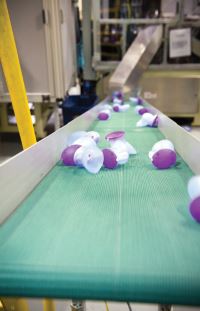Written on: July 1, 2012 by SprayTM

Packaging is not only an integral element of product development for the home and garden
industry, but of brand management as a whole. As a product’s packaging and dispensing is often the most tangible representation of a brand that a consumer comes in contact with, they need to be as innovative as the company and the product themselves. Product usability and the customer experience are direct reflections of the brand at its core, and packaging plays a critical role.
In order to be quality brand ambassadors for our customers, a packaging company must spend a lot of time in the lab sketching, mapping, designing and engineering the most innovative dispensing packaging solutions that match brand requirements with customer needs. At MWV, we define innovation by our collaborative approach. We brainstorm, discuss, imagine, draw and re-draw ways to improve packaging by considering ergonomics, dispensing, aesthetics, functionality, storage and interactions with the formula. The list goes on and on, but no matter what the brainstorm topic, this process allows us to meet the goals of the brand. This is where the innovation happens. We believe the most critical part of a truly innovative creation process though, is interacting with our customers (the brand) and understanding our customer’s customers (the consumers).
 Through our Center for Packaging Innovation (CPI) and Centers of Excellence, MWV works to understand the science of packaging and the consumer trends that affect it. Researchers, analysts, packaging designers, materials scientists and marketing professionals from across the globe work together, both on-site and virtually, to bring new thinking to packaging. Additionally, we host an online Open Innovation forum where we encourage others—including customers, influencers and other non-MWV employees—to submit their ideas, so that we are considering the widest range of possibilities to every challenge.
Through our Center for Packaging Innovation (CPI) and Centers of Excellence, MWV works to understand the science of packaging and the consumer trends that affect it. Researchers, analysts, packaging designers, materials scientists and marketing professionals from across the globe work together, both on-site and virtually, to bring new thinking to packaging. Additionally, we host an online Open Innovation forum where we encourage others—including customers, influencers and other non-MWV employees—to submit their ideas, so that we are considering the widest range of possibilities to every challenge.
The value propositions for new designs are confirmed through regional consumer insights around the globe and are audited by our experts (internal and external) in human ergonomics, to guarantee maximum performance and an enhanced consumer experience.
The Concept: What’s needed, what’s possible, what’s feasible?
Many people are talking about innovation and how important it is, but what does it really mean? Each company certainly has its own way of talking about innovation. At MWV, when we begin the development of a new product, we have all kinds of differing perspectives and expertise in the conversation focused on how to address a market need. We aim to give our customers not just a better solution, but an entirely new way to solve a problem. Conversations with consumers need to be ongoing. We leverage consumer insights not only at the end of our development process, but throughout—from our first meeting about a new concept, to the time we reach the final product—the goal is that the product has been shaped significantly by consumers themselves. Many times our best ideas are generated when we identify the unmet needs that our customers didn’t even realize existed, and build solutions to help meet those needs. For example, through consumer insights studies, we learned that for some market categories, consumer product use increases when they interface with a more comfortable dispensing device.
Collaborative Intelligence: Global and Local
Interactions across the supply chain and across regions are integral to innovation, and should be taken very seriously. For a newly developed aerosol dispenser for home and garden products, for example, we conducted several studies to gather feedback from the most important stakeholder in this whole process—the consumer. We collected opinions, suggestions and impressions from studies done in the U.S. and China that led to ergonomic
and aesthetic changes in design.
The tests we ran in China were particularly telling because this type of ergonomic trigger actuated aerosol sprayer is newer to the market. We wanted to understand consumer attitudes and habits towards the sprayer, and how they might adapt to it. The study focused on the reported consumer experience and their impression of the product, and it led to some critical changes in the design. For example, our original design included a raised rib on the front of the trigger. This feature was designed to help direct the user’s finger to the ideal point on the trigger for its optimal force to actuate. However, in our testing,
consumers confused its purpose and placed their finger directly on it, causing discomfort. This drove our team to reevaluate the design and remove the rib from the trigger.
Testing combines our product design with consumer feedback and insights, which enables our team to confirm and solidify the product’s role in consumers’ lives. By proactively assessing consumer behavior and sentiments, our team can better anticipate market opportunities and drive trends rather than follow them.
The End Result
When it comes to commercializing the end result of this entire process, we understand that our innovations work best when they are built with the input of many around the world who are using the products. Innovation is a remarkable force for the industry. It leads to breakthrough products for brand owners with added benefits, such as improved ergonomics and ease of use, to differentiate their brand. As brand owners innovate and evolve, so do we. A product’s packaging and dispensing system must help convey a brand’s image; after all, it’s a consumer’s first and, many times, most lasting impression of a brand.